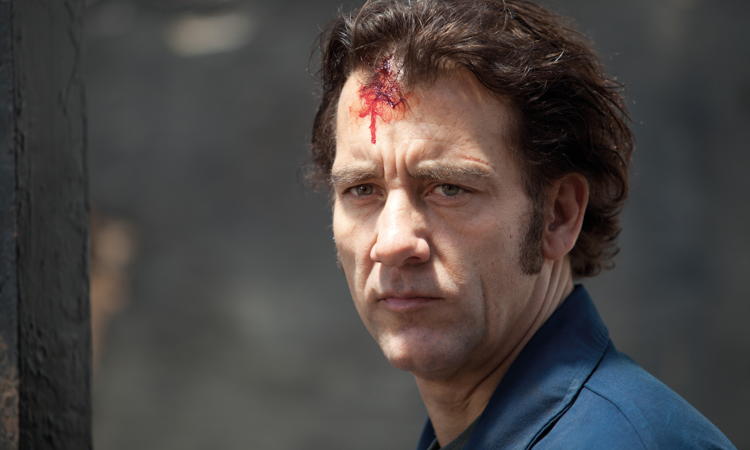By Eric Corson · March 18, 2014

In 2012, the Swiss novelist Joel Dicker released the crime potboiler La vérité sur l’affaire Harry Quebert. It became quite the sensation in the French speaking literary world, owing him many accolades and the prestigious “Prix Goncourt”. The story concerned a novelist investigating the death of a little girl in New Hampshire. About his motivations to write a story set in the United States with American characters, the author wrote on his website: “Why did I want my book to take place in America? For the Americans, of course. America inspires me. I have spent a lot of time there, I have traveled across the country, I have thought there a lot, I have dreamt there a lot.”
In order to write about America, one has to write like an American, Dicker realized, adding: “It would be a great exercise in style.” French actor turned director Guillaume Canet seems to have had a similar interest in setting a story in America because of his affinity for the place. Blood Ties, based on the Jacques Maillot film Les Liens du Sang often feels like someone’s fantasy of what a gritty American noir epic should be, instead of materializing as one. It’s the movie of a French auteur who loves 70s Scorsese and Lumet, and who did his best to recreate the atmosphere of these films. But by trying to emulate a specifically American style of a certain era, Canet forgot to also tell a compelling story of his own.
The film is set in 1974 New York. Clive Owen plays Chris, a career criminal who just spent several years in prison for a gangland murder. His brother Frank (Billy Crudup), an NYPD cop, takes him in reluctantly. Chris vows to get by with legal means, but as is the case with films such as these financial realities and old alliances sweep him straight back to the same life of crime and blood money that got him into jail in the first place. By the time Frank cuts his ties with Chris it’s too late. Their choice of women (what else?) and a harrowing, deadly robbery already tied their fates together forever.
I know what you’re thinking. You’ve seen this movie before, you’ve heard this story elsewhere, and why would anyone go through the trouble of recreating a gritty 1970s New York if you can just pop in Mean Streets and have the real thing? These are all valid concerns (and believe me, the two hours plus running time, another example of what Canet himself calls his “regrettable tendency to make films too long”, does the movie no favors) but I would propose a different way of reading the film. Blood Ties is a fascinating case study of how someone from a completely different cultural background perceives 1970s New York and America in a larger sense.
More than the stale story, more than the sometimes excellent cast (James Caan as Chris and Frank’s father does miracle work with his clichéd material, Owen himself has a lot of charm, while Marion Cotillard and Zoe Zaldana struggle mightily with thankless roles) this is a movie that should interest us for the way it portrays its milieu. It’s not a movie that offers us a realistic look at 1970s New York, it’s not even a movie that has anything substantial to say about cops and robbers and their ying/yang relationship. This is a movie that fetishizes certain aspects of 70s American crime films and repackages them as a period genre piece. The twist is that it comes from the creative mind of someone who looks at it from the perspective of the outsider looking in.
Every single character, every single plot point in Blood Ties is clichéd to the point of almost seeming ludicrous. What gives the movie its gravitas, however, is its unquestioning devotion to those clichés. Canet doesn’t tread in bad material, he is, to borrow Joel Dicker’s phrase, trying to “direct like an American.” Canet delivers stereotype after stereotype but that’s because he’s not interest in providing us with anything else. He simply wants to make his American film, his “exercise in style”. Blood Ties is simply what he imagines to be an American film.
And there is no doubt he had great fun making the movie. The set design throughout is lovingly intricate. Paired with the camerawork, Canet has us sometimes fooled to think we’re really watching a movie from four decades ago. Some of the performances are fun exactly because they are as broad as it gets. But whenever the film tries to pull our heartstrings, it becomes clear that there is an emptiness at it’s center that all the bells and whistles of production design can ultimately not fill. It’s the hole where an actual engaging story is missing.
Joel Dicker’s book La vérité sur l’affaire Harry Quebert was cut from the same cloth. The author used clichéd characters galore and plot twists familiar to everyone who’s ever seen two episodes of Law & Order. But the enthusiasm with which he wrote his trite material was apparent from the first page and I couldn’t put it down. Obviously, he had a lot of fun writing characters he had read and seen his whole life in American fiction, characters that didn’t exist like that in French fiction. While Blood Ties felt more pedestrian to me, it’s captivating to see a French artist give his best impression of quintessential American material. But in the end, they’re vanity projects. Mileage for the audience might vary wildly.